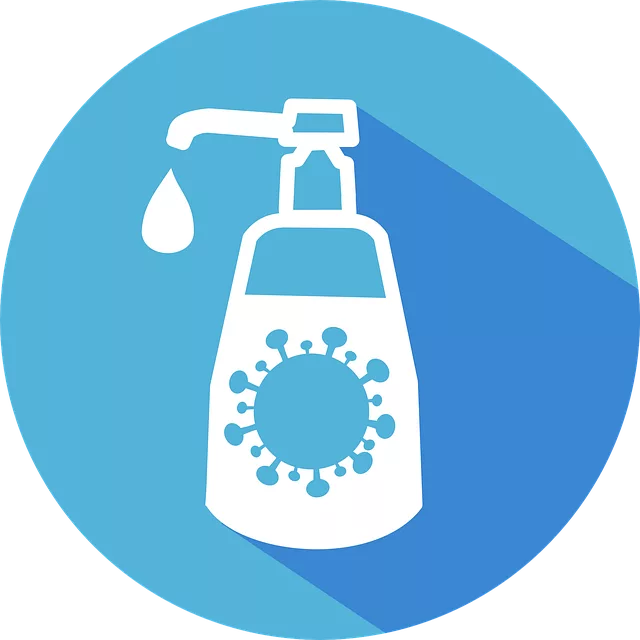Industrial hygiene consultants play a pivotal role in managing hazardous materials through comprehensive workplace hazard evaluations. They identify risks, design control measures including engineering and administrative controls, and ensure compliance with occupational exposure limits set by regulatory bodies. By implementing best practices like proper labeling, ventilation, and employee training, these experts create safer work environments, protect employee health, and foster a culture of safety around hazardous material storage and handling.
“In the realm of industrial safety, understanding and managing hazardous materials is paramount for industrial hygiene consultants. This comprehensive guide navigates the intricate aspects of storage guidelines, offering valuable insights for professionals. From ‘Understanding Hazardous Materials’ to ‘Best Practices for Disposal,’ each section unravels critical components of risk assessment.
‘Workplace Hazard Evaluation’ outlines steps to identify potential dangers, while ‘Occupational Exposure Limits’ provide essential boundaries for worker safety. With a focus on industrial sites, this article ensures consultants are equipped with the latest safe storage practices and strategies to prevent common material-related hazards.”
- Understanding Hazardous Materials: An Overview for Industrial Hygiene Consultants
- Workplace Hazard Evaluation: Steps to Identify and Assess Risks
- Occupational Exposure Limits: Setting Safe Boundaries
- Safe Storage Practices: A Comprehensive Guide for Industrial Sites
- Common Hazards in Material Storage and Prevention Strategies
- Regulatory Compliance: Adhering to Safety Standards and Guidelines
- Best Practices for Managing and Disposing of Hazardous Materials
Understanding Hazardous Materials: An Overview for Industrial Hygiene Consultants
Hazardous materials, often encountered in industrial settings, demand a nuanced understanding for safe storage and handling. Industrial hygiene consultants play a pivotal role in navigating this complex landscape by conducting comprehensive workplace hazard evaluations. This process involves identifying potential risks associated with various substances, ranging from toxic chemicals to infectious agents. By assessing factors such as composition, quantity, and potential routes of exposure, these experts can determine the appropriate measures for risk mitigation.
Occupational exposure limits, established by regulatory bodies, serve as guidelines to protect workers’ health. Industrial hygiene consultants utilize this information to design effective control strategies. These may include implementing engineering controls, like well-ventilated storage areas or automated systems, alongside administrative and personal protective equipment (PPE) measures. The goal is to ensure that the workplace environment adheres to safety standards, minimizing the risk of occupational exposure to hazardous materials.
Workplace Hazard Evaluation: Steps to Identify and Assess Risks
Workplace Hazard Evaluation is a crucial process for identifying and mitigating risks associated with hazardous material storage. The first step involves conducting thorough inspections and audits, where industrial hygiene consultants examine the facility, equipment, and practices related to hazardous substances. This includes assessing the types and quantities of materials stored, as well as evaluating ventilation systems and personal protective equipment (PPE) availability.
During the evaluation, consultants consider occupational exposure limits set by regulatory bodies to ensure compliance. They also identify potential hazards like chemical compatibility, spill response procedures, and proper labeling and storage practices. By systematically analyzing these factors, organizations can implement effective strategies to minimize risks, enhancing workplace safety and adherence to industrial hygiene standards.
Occupational Exposure Limits: Setting Safe Boundaries
Occupational Exposure Limits play a crucial role in setting safe boundaries for workers interacting with hazardous materials. These limits, established by industrial hygiene consultants and regulatory bodies, define acceptable concentrations of substances in the air to protect employees from potential health risks. They are based on extensive research and workplace hazard evaluations, ensuring that exposure levels remain below thresholds known to cause harm over time.
By adhering to these occupational exposure limits, organizations can maintain a safe and healthy work environment. Regular monitoring and adherence to guidelines help prevent respiratory issues, skin irritations, and other health complications associated with hazardous materials. Industrial hygiene consultants assist companies in understanding these limits, conducting risk assessments, and implementing necessary control measures to minimize employee exposure, thereby fostering a culture of workplace safety.
Safe Storage Practices: A Comprehensive Guide for Industrial Sites
Maintaining a safe storage environment for hazardous materials is paramount in industrial settings to ensure the well-being of employees and the surrounding community. Industrial hygiene consultants emphasize that adopting comprehensive guidelines is crucial for effective risk management. These practices begin with proper labeling, ensuring all containers are clearly marked with detailed information about the contents, including potential hazards and appropriate handling procedures.
Storage areas should be designated based on material compatibility, keeping similar substances together to prevent accidental reactions. Additionally, implementing strict ventilation systems and regular monitoring of air quality is vital to control volatile compounds. Occupational exposure limits set by regulatory bodies must be strictly adhered to, guiding the maximum allowable concentrations of hazardous substances in the workplace air.
Common Hazards in Material Storage and Prevention Strategies
In many industries, hazardous material storage presents significant risks that require meticulous planning and adherence to safety protocols. Common hazards include toxic substances, flammable materials, and corrosive agents, each posing unique challenges. For instance, exposure to toxic chemicals can lead to severe health issues, while flammable liquids or gases can ignite, causing fires or explosions. Corrosive substances may damage storage containers and equipment over time.
Prevention strategies are pivotal in mitigating these risks. Engaging the services of industrial hygiene consultants is a proactive step, as they conduct comprehensive workplace hazard evaluations, identifying potential risks and offering tailored solutions. Strict adherence to Occupational Exposure Limits (OELs) established by regulatory bodies is essential. Proper labeling, ventilation systems, and secure containment vessels can significantly reduce exposure. Regular training for employees on handling and storage procedures ensures everyone understands the potential dangers and knows how to respond effectively in case of an incident.
Regulatory Compliance: Adhering to Safety Standards and Guidelines
In the realm of hazardous material storage, regulatory compliance is non-negotiable. Industrial hygiene consultants emphasize the significance of adhering to safety standards and guidelines set forth by governing bodies to mitigate risks associated with workplace hazards. These standards encompass a range of critical factors, including proper labeling, containment measures, and ventilation systems designed to prevent exposure and maintain occupational safety.
A comprehensive workplace hazard evaluation is the first step towards ensuring regulatory compliance. This involves identifying potential risks, assessing their magnitude, and implementing control measures that align with established occupational exposure limits. By following these guidelines rigorously, organizations can foster a safer work environment, protect employee health, and avert legal repercussions related to non-compliance.
Best Practices for Managing and Disposing of Hazardous Materials
When managing and disposing of hazardous materials, adherence to best practices is paramount for maintaining a safe workplace. Industrial hygiene consultants emphasize the importance of proper storage, handling, and documentation to mitigate risks associated with exposure. A crucial step involves conducting comprehensive workplace hazard evaluations to identify substances present, their potential dangers, and the level of occupational exposure limits.
These evaluations guide the implementation of control measures such as engineering controls (e.g., ventilation systems), administrative controls (e.g., training programs), and personal protective equipment (PPE). Regular inventory checks and adherence to safety data sheets (SDS) ensure that all personnel are aware of the proper handling procedures, emergency response plans, and disposal protocols for hazardous materials. This holistic approach to industrial hygiene promotes a culture of safety in the workplace.


